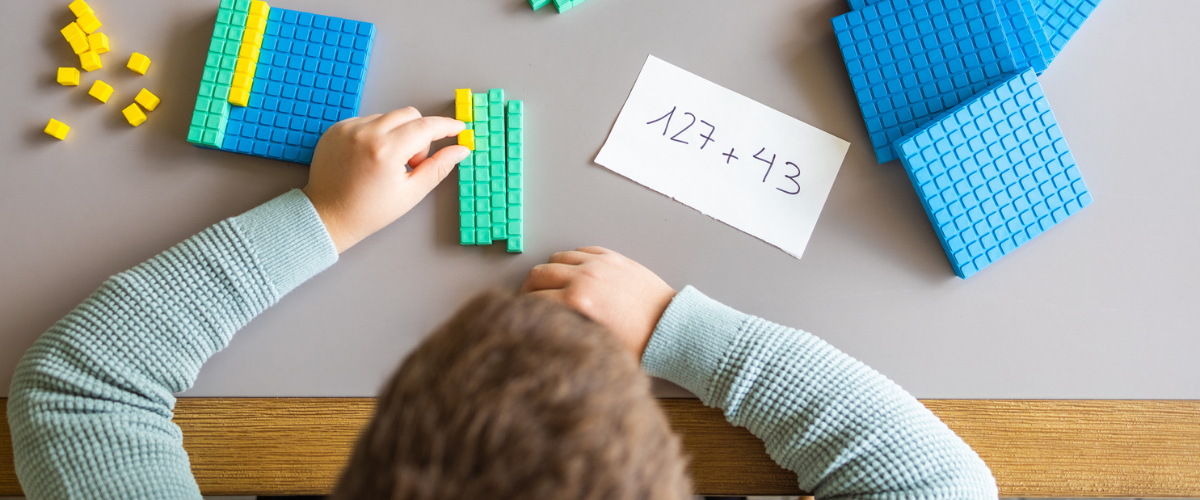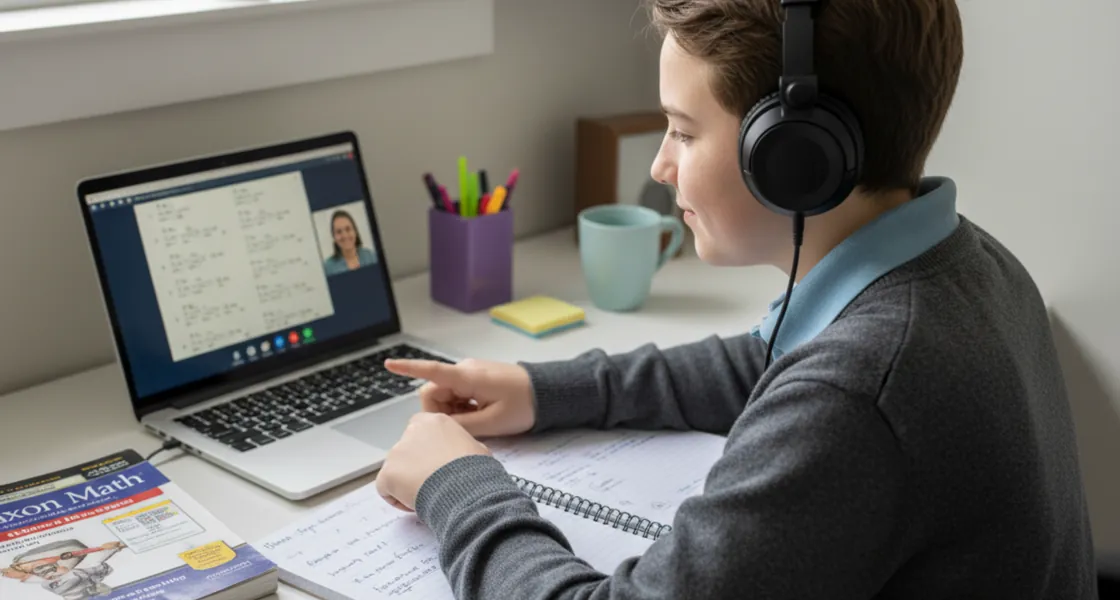In our last blog, we explored why it’s so critical to develop a conceptual understanding of math and to build math fluency, problem-solving, and reasoning skills.
Today, we’re discussing some practical tools you can leverage to help children unlock their conceptual understanding of math. Specifically, how you can engage multiple senses like visualization and kinesthetic learning to help kids see and explore math in a whole new way.
The importance of manipulatives and diagrams
When you look at Common Core-aligned curricula, textbooks, and resources you may be using to homeschool math, you'll notice they encourage kids to visualize problems and their solutions — an approach shown to improve math performance.
Kids can do this through hands-on 'concrete' items, also called math manipulatives. These can include counters, cubes, Base 10 blocks, coins, tens frames, fraction strips, and hundred squares, and when you're homeschooling math, it's important to have a range of manipulatives available for your kids to use.
Of course, these manipulatives are only a starting point and can help children see and understand the structure behind math.
Once they’re confident with a particular operation, problem, or area of math, they will be able to develop their learning and understanding so that they no longer need to use manipulatives for that specific skill.
Instead, they may use diagrams or pictures, such as number lines and tape diagrams, before moving to completely abstract methods.
Key new math concepts and models
Several key concepts and models underpin math and are the foundation of many of the topics, methods, and strategies kids learn throughout their math education journey. These include:
Place value
Place value is one of the most fundamental concepts in math and should be central to your explanations if you're homeschooling math.
Place value means a digit's position in a number impacts its value. For example, in the number 457, the digit 4 represents four hundreds (400), the digit 5 represents five tens (50), and the digit 7 represents seven ones (7).
When teaching math, it's essential to keep place value in mind, always referring to a digit in a number by the value it represents.
So, when explaining how to solve 24 + 36 = ? using a vertical method, you would say 'add the two tens to the three tens' or 'add the twenty to thirty, rather than 'add the 2 and 3.'
Partitioning/Decomposing
A firm understanding of place value allows kids to partition (or decompose) numbers, which means breaking them up into different parts. The most common type of partitioning is by place value, also called canonical partitioning.
Partitioning / decomposing can help with calculations, for example, 37 + 55 = ? could be solved by a second grader by decomposing the numbers:
Struggling with explaining partitioning and decomposition, then why not outsource to Outschool?
Our expert online math teachers can help explain partitioning and place value to your kids in many of our interactive and engaging online addition and subtraction or multiplication and division classes.
Base 10, exchanging, and regrouping
Kids also need to understand the relationship between each place value and that as our number system has a 'base' of 10, each place value in a number is worth ten times the value of the digit to its right. So, for example, 10 'ones' is the same as 1 'ten', and 10 'tenths' is the same as 1 'one'.
This concept is central to calculation, as, for example:
When calculating 32-13=?, we would 'exchange' 1 'ten' for 10 'ones' (when procedurally, we might have said we would have 'borrowed').
When calculating 34 + 8 = ? we would regroup 12 'ones' into 1 'ten' and 2 'ones' when adding (when traditionally you might have said you 'carried' a '1' to the 'tens' column).
Number pairs or number bonds
Number pairs (sometimes called number bonds) are pairs of numbers that add together to make another number.
One particularly useful set of number bonds that kids should know by the end of kindergarten is number bonds to 10– i.e., all the pairs of numbers that add together to make 10. This can help them carry out calculations with larger numbers as they can automatically 'spot' when pairs of numbers add to 10.
Number pairs are often represented using a part-part-whole diagram:
Array/Area models
Arrays are a fundamental representation for multiplication.
They help show that when we multiply, we have a number of equal-sized groups and that multiplication is commutative — that is, it doesn't matter what order you multiply numbers in; the answer is the same.
Arrays also help show that multiplication is the same as repeated addition- for example, 6 x 7 = 7 + 7 + 7 + 7 + 7 + 7.
The concept of arrays for multiplication also leads to the area model, which kids in fourth grade and upwards may use to solve multiplication questions.
Tape diagrams/bar models
Tape diagrams, also known as bar models, are diagrams that kids can draw to visually represent numbers and unknowns in problems to help them see the underlying structure of a problem or operation.
When homeschooling math, you can help kids solve problems using tape diagrams in every grade and for many different areas of math.
Open number lines
An open or blank number line is a number line with no numbers pre-marked on it. They allow kids to use any number as their starting point and can be used to visualize all math operations.
For example, for understanding addition:
As well as multiplication:
And subtracting decimals by finding the difference:
Friendly numbers
Friendly numbers are easier for kids to work with, and they are typically a multiple of 10 or 100.
These are used to help with calculations. For example, when solving 32 + 28=? You could think of 32 as 30, which is a rounder, "friendly number." Then, you could add the 2 you've taken away from 32 to 28, making 30, meaning you can just add 30 and 30, making the answer 60.
Frustrated with new math? Find a friendly Outschool teacher to help
As mentioned before, “new” math shouldn’t be scary, however, sometimes it may feel that way.
If you find yourself confused or frustrated trying to homeschool math in the 'new' way to help kids understand math conceptually, find an Outschool teacher who can help.
Outschool offers a wide range of online math support, from private math tutoring, logic courses, calculus, and math camps to classes that cover the full math curriculum. Or check out a class on percentages, math facts, long division, and math word problems.
Outschool has your back.


.svg)
.svg)







